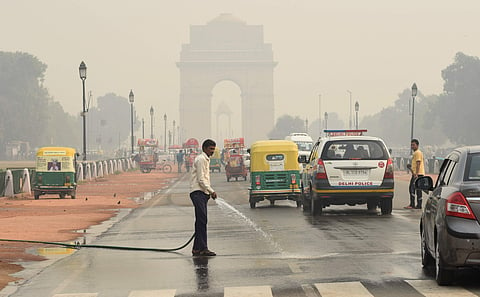Smog from Punjab’s stubble burning unlikely to impact Delhi’s air: Experts
NEW DELHI: Smog produced due to burning of paddy stubble in Punjab fields is highly unlikely to travel 300-400 km to adversely impact Delhi’s air quality, Ludhiana-based Punjab Agricultural University’s (PAU) experts said on Friday.
The inference by researchers at the Department of Climate Change and Agriculture Meteorology is based on the wind speed in Punjab during October and November between 2017 and 2019.
Prabhjyot Kaur Sidhu, who compiled the study, said that if smog from Punjab were to move towards Haryana and Delhi, the wind speed should be more than 4-5 km per hour and its direction north-westerly or at least westerly.
She said that in the three years under study, on only one day did the wind speed exceed 5 km/hr to 5.9 km/hr on November 7, 2019.
“In fact, the wind direction that day was southeast easterly, which means wind from neighbouring states like Haryana and Delhi was blowing towards Punjab,” Sidhu explained.
The southeast easterly wind from Punjab is thus highly unlikely to affect the air quality in neighbouring states, she said.
With the fall in mercury in October and November, there is a reduction in the formation of air currents.
“A stable atmospheric condition is created during these two months in which only a little vertical movement of air current occurs while the horizontal movement of air is also reduced. Dust and smoke particles added to the atmosphere due to straw-burning and other pollution sources get entrapped,” Sidhu said.
“It is like a closed-room situation in which hardly anything comes in from outside or goes out.This situation starts building up over the days until a low-pressure weather system or a western disturbance moves in and relieves the situation in the form of horizontal wind drift or some rainfall which sort of washes the lower parts of the atmosphere,” the researcher said.
Eco-friendly crackers the way ahead for city
‘Green crackers’ are not as polluting as conventional firecrackers and contain at least 30 per cent less particulate matter such as Sulphur Dioxide and Nitrogen Oxide. The CSIR-National Environmental Engineering Research Institute was tasked with the job of developing ‘green crackers’.
ALSO WATCH:

